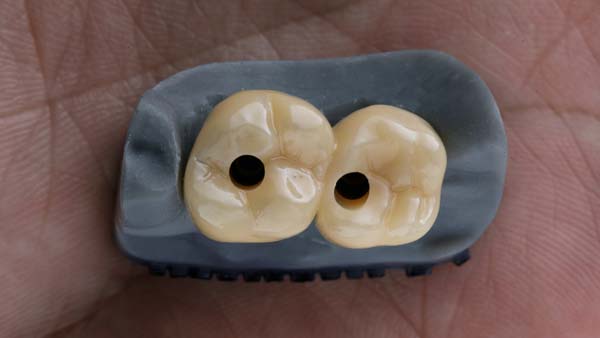How Long Does Dental Implant Placement Take?

Getting dental implants is an important choice in your goals for good oral health. This treatment is also a great way to restore your smile and feel good about your appearance again. If you compare implants to other tooth-replacement options, you will see the differences and benefits that implants offer. The process of getting implants can be long and challenging, though. You should learn everything you can about this procedure so you can be prepared and feel more positive about the experience.
Factors that lead to tooth loss
When children lose baby teeth, it is a big celebration. When a person loses a permanent tooth, it is no cause to rejoice. Living without teeth can affect a person’s ability to eat a healthy diet. It can even change a person’s speech and the shape of their face. There are also, of course, impacts on the individual’s self-esteem. Tooth loss can be embarrassing.
Sometimes, tooth loss occurs due to no fault of the individual. A hard blow to the face from a fall, collision, or another type of injury can knock out a tooth. In other cases, poor oral hygiene is the main cause. Failure to brush and floss properly and frequently can cause decay and infections. Without intervention, this can cause tooth deterioration, bone, loss, and tooth loss.
Starting the dental implant process
When the dentist and patient decide that dental implants make the most sense, there will be an initial, preparatory appointment. Here, the dentist will take X-rays and make impressions of the person’s mouth. If necessary, the dentist may extract damaged teeth. The dentist will then schedule another appointment for the first implant surgery.
Placing the dental implants
Depending on how many implants the patient is getting, the first surgery should take around an hour. If the patient needs multiple implants, the individual should plan on two hours for the procedure. The dentist will numb the patient with a local anesthetic. Once the patient is comfortable, the dentist will make an incision in the gums. Then, the general dentist will insert a screw-like dental implant deep into the jaw. The dentist then closes the wound.
Getting the abutments
After the first step, the bone and implant need time to fuse. The patient will also heal over the next several weeks. Sometimes, this period can take up to six months or more, depending on the patient’s recovery. Once ready, the patient returns to the office for the next surgery. The dentist again numbs the patient and reopens the gums, exposing the tops of the implants. A smaller piece called an abutment attaches to the dental implant.
Getting the crown
After a couple of more months of healing, the patient returns to the dentist’s office. The dentist will attach natural-looking crowns to the abutments. The crowns will match the color, shape, and size of any remaining teeth. The dentist will check to make sure the fit is comfortable and secure.
Worth the time and effort
Getting dental implants can take up to several months from start to finish. There will be some discomfort and soreness with the process. The recovery period can also be challenging. However, the results are long-lasting and can restore your mouth’s function. You can also be happy with your new smile.
Request an appointment here: https://www.brightdentalcare.net or call Bright Dental Care at (626) 709-4776 for an appointment in our La Puente office.
Check out what others are saying about our dental services on Yelp: Dental Implants in La Puente, CA.
Related Posts
Many children experience dental anxiety before a dental checkup. However, the good news is that there are certain things parents can do to help children deal with their nerves before a visit with a kid friendly dentist. By taking the time to help your child deal with their anxiety at a young age, it can…
You have probably heard about dental implants and how this tooth-replacement option can restore your smile. Dentures are another treatment that patients with multiple missing teeth can benefit from. Your dentist can also combine the two by providing implant-supported dentures. There are reasons that this method offers advantages over traditional dentures.Both types of dentures come…
Most dental issues (predominantly tooth decay and gum disease) are caused by plaque, a sticky bacterial film. Continue reading to learn how tooth decay and gum disease are connected. This is why bacterial plaque is often the focus of rigorous at-home oral care regimens and regular dental exams.Plaque bacteria thrive by coexisting in areas where…
Anyone who has experienced a full mouth reconstruction knows these procedures are challenging. The processes can be long and include some pain and discomfort. The recovery process can take some time and be difficult for some people. The good news is that you can get the results you want and enjoy a brand-new smile once…
